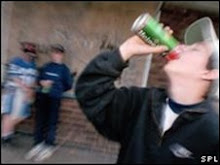The control of alcohol sales has been a controversial issue for centuries. On one hand, alcohol consumption is considered a threat to health, safety (eg. impaired driving, family protection), public order, economic interests and productivity. These perceived threats were the driving force of prohibition in the 19th century. On the opposite end, the government could completely withdraw their interests in the alcohol market and allow it to go privatized (Room, 1990).
Both these options are unrealistic, as prohibition is unenforceable and a private market for alcohol will exacerbate its negative effects. Therefore, the government realized it is in their best interests to allow but fully control the alcohol market. Room (1990) describes that control is better than banning the alcohol industry by stating that the government may not be able to control illegal production, but it can fully control the industry if legalized.
The current dominant ideologies of alcohol control were created and maintained by the assumption that it provides many benefits to the government. First and foremost, it allows the state/province to collect all the profit as the market is monopolized and very profitable. Alcohol taxes are a significant source of revenue, which is appealing since income tax was the previous bread-winner (Room, 1990).
In terms of control on alcohol sales, the increase of the minimum drinking age was implemented in the 1980’s. This was the result of society’s worries about youths (Room, 1990). The minimum drinking age was a way to avoid banning alcohol, but control for alcohol induced crime. A study was conducted to locate what populations are the largest alcohol consumers. The findings show that youths (18-29) account for 45% of adult drinking. Therefore, these laws were put into practice to “reduce consumption by the heaviest drinkers” (Greenfield & Rogers, 1999).
Tuesday, October 7, 2008
Subscribe to:
Post Comments (Atom)


No comments:
Post a Comment